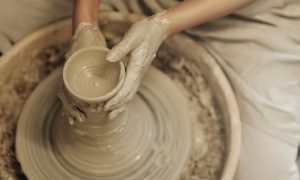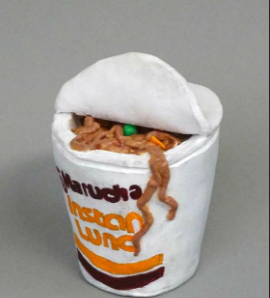
I consider noodles almost like clay in that you can make it into whatever you want because of its versatility.

Noodles in China have a long history of being tied with a cultural experience or location. According to the reading noodle: traditionally and today, noodles have local characteristics. For example, In East China, there are Shanghai noodles in superior soup. There are also many cultural practices centered around the noodle such as birthdays when people eat longevity noodles and at the time of marriage, they eat noodles with gravy also known as flavored life. Noodles are even characterized by the seasons or festivals where they are present, such as the dragon whiskers noodles eaten at the longtaitou festival. Traditions of preparing noodles typically stay in the cultures for long periods of time like the Bamboo pole noodle that is found in the southern part of China and has a long history in the culture even though it was labor-intensive and time-consuming. Even with being tied to a cultural experience though the identity of the noodle could change. For example, In history, the Dan Dan noodle was known for the way it was sold on the shoulder pole and after a long period of time when it wasn’t sold as a street snack because of government restrictions it was later known for the way it prepared with including minced meat and a vegetable preserve.
Italians noodles have a long history that is well tied to cultural traditions. In the 1300s pasta was often taken on long voyages because it could last for long periods of time. Like Chinese noodles, pasta is often regionally characterized, There are roughly 300 different shapes and varieties of dried pasta in Italy. For example, ziti is known to the region of Sicily and Penne is known to the region of Campania. Even Italians have pasta known for certain events. When I visited Siena for the Palio, they would serve specific dishes like pici alla lepre. This kind of dish has a huge cultural significance in that it is usually prepared and served among several other dishes the night before the festival. At this time by eating this food and singing and dancing, each of the Contrads (neighborhoods) are hoping that they would have a huge accomplishment at the festival.
The noodle is an important staple in Chinese traditions. To people in China, noodles are a kind of cereal food and also the main source of energy. Similarly, for Italians, it is an as important staple in the article truth about pasta the authors talk about how pasta meals have roots that stretch back to ancient times and how they would often have foods accompanied with pasta and that tradition has continued now. The authors also talk about the Mediterranean diet and how the foundation of this cuisine is pasta because they are so easily prepared and versatile in the foods they can be prepared with.
In China, the noodle plays an integral role, primarily due to its long history in the culture as a simple and easy to cook food. Chinese noodles originated in the Han dynasty. At that time, they were collectively referred to as cake. Also, the reading Dan Dan noodles talk about Xie Laobans Dan Dan noodles were a pick me up a cure for hangover a heartache and the perfect antidote to the gray humidity of the Chengdu climate. Therefore Chinese also believe noodles can have health benefits.
For Italians, pasta is a quintessential dish because of its versatility in how it can be prepared and it can be easily prepared. As stated in the article, the truth about pasta, “Pasta may be the most convenient, delicious health food out there. It can be found at parties. It’s good for adventurous palates and simple tastes. It is not expensive and it’s quick to prepare; it’s a regular on restaurant menus and grocery shelves; and, a pasta meal actually works two-fold by being a fantastic vehicle for other healthy foods.” There are so many benefits to pasta that its hard not to depend on a dish like this.
I would consider the noodle as a staple food that can be prepared in a plethora of ways, an integral part of the culture, and prepared for various purposes from special events, to family meals, to remedies for an illness.
